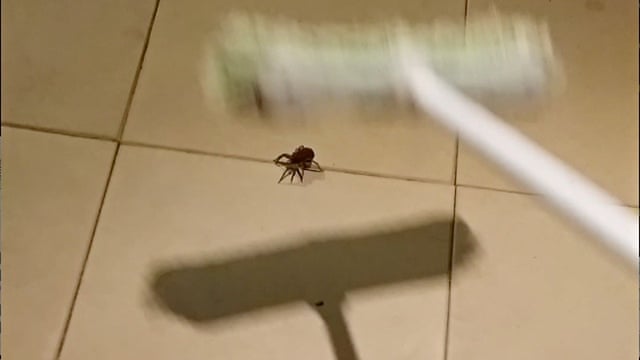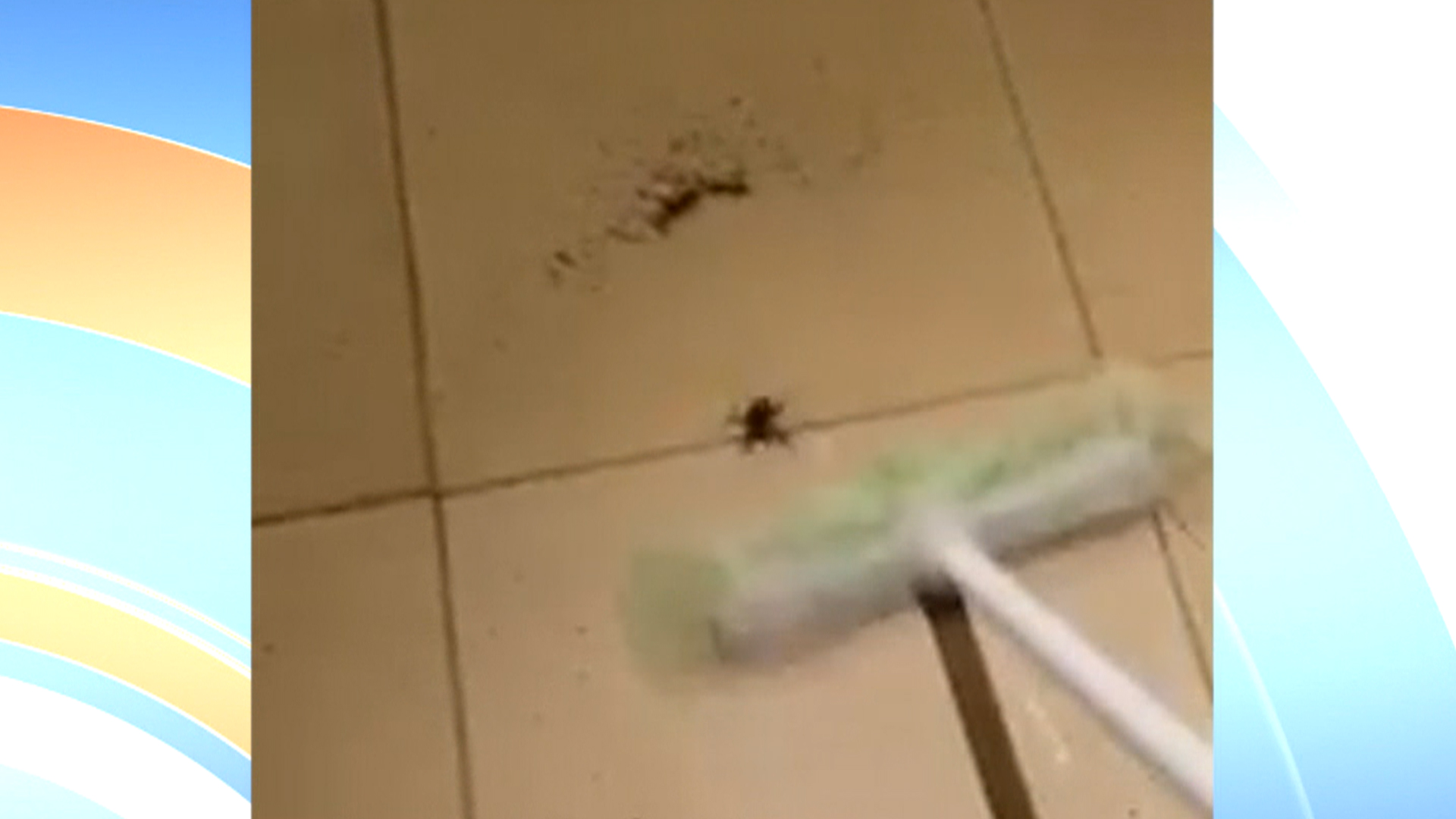Killing a pregnant spider may cause the babies to be released and spread everywhere. If you kill a pregnant spider, the babies may scatter.

Credit: www.theguardian.com
Spiders: Fascinating Creatures And The Impact Of Killing A Pregnant Spider
Killing a pregnant spider can have unintended consequences, as the babies may be released and spread everywhere. It’s important to handle wolf spiders carefully and consider alternative methods, such as trapping and releasing them outside, to avoid a potential infestation.
Spiders are remarkable creatures, often evoking feelings of curiosity and fascination. These eight-legged critters play a vital role in ecosystems, serving as nature’s pest control by feeding on insects and other small creatures. However, when it comes to the consequences of killing a pregnant spider, it raises interesting questions about the impact on both the spider population and the environment.
Let’s dive deeper into the subject and explore the effects of killing a pregnant spider.
Introduction To Spiders And Their Importance In Ecosystems:
Spiders are an essential part of the natural world, contributing to the balance and well-being of ecosystems:
- Spiders help control the population of insects and pests by preying on them, making them a valuable form of pest control.
- They play a crucial role in maintaining the balance of nature by preventing the overpopulation of other organisms in the food chain.
- Spiders are important pollinators and aid in the dispersal of plant seeds, contributing to the reproduction and diversity of plant species.
The Curiosity Surrounding The Consequences Of Killing A Pregnant Spider:
Killing a pregnant spider might seem inconsequential at first glance, but it can have unexpected consequences:
- Disturbing the natural life cycle: When a pregnant spider is killed, it disrupts the spider’s ability to reproduce and contribute to the population growth.
- Impact on offspring survival: Some species of spiders carry their young on their bodies or create egg sacs to protect them. Killing a pregnant spider can lead to the loss of not only the mother but also the potential offspring.
- Reduction in natural pest control: By eliminating a pregnant spider, you may inadvertently reduce the population of natural predators that help control insect populations.
The Delicate Balance Of Ecosystems And The Need For Conservation:
Ecosystems are intricate webs of interconnected species, reliant on each other for stability and survival:
- Removing a pregnant spider from the ecosystem disrupts the delicate balance, potentially leading to an increase in certain insect populations.
- Increased pesticide usage: With fewer spiders to naturally control pests, humans may resort to increased pesticide usage, which can have detrimental effects on the environment and other organisms.
- Conservation and coexistence: It is crucial to respect and coexist with spiders, implementing humane methods like relocation rather than resorting to killing them.
In
While killing a pregnant spider may not seem like a significant action, it can have unintended consequences on the spider population and the delicate balance of ecosystems. By recognizing the importance of spiders and their role in pest control and biodiversity, we can foster a greater understanding and appreciation for these fascinating creatures.
Instead of resorting to killing, consider alternative methods such as relocation to maintain harmony within our ecosystems.
Remember, every living creature has a place in the natural world, and it is our responsibility to preserve and protect it.
Understanding Spider Reproduction And Pregnancy
Killing a pregnant spider can lead to the release of hundreds of spiderlings, as they try to escape their mother’s body. If you come across a pregnant spider, it’s best to safely remove it without harming it or its babies.
When it comes to understanding spider reproduction and pregnancy, there are several fascinating aspects to explore. From the life cycle of spiders to the role of female spiders in reproduction, let’s delve into the world of spider pregnancy and what happens when you encounter a pregnant spider.
The Life Cycle Of Spiders: From Egg To Adulthood
Spiders go through a distinct life cycle, transforming from eggs to fully grown adults. Here’s a breakdown of the different stages:
- Egg stage: Female spiders lay eggs, usually in an egg sac, which provides protection and nourishment to the developing spiderlings.
- Spiderling stage: Once the eggs hatch, spiderlings emerge. They are tiny and undergo several molting stages as they grow larger.
- Juvenile stage: As spiderlings continue to molt and grow, they enter the juvenile stage. This stage is characterized by their increasing size and the development of their characteristic features.
- Adult stage: After several molting stages, spiders reach their adult stage. They are now fully grown and capable of reproduction.
The Role Of The Female Spider In Reproduction
Female spiders play a crucial role in spider reproduction. They are responsible for laying eggs and protecting the egg sac until the spiderlings hatch. Here are some notable points about the role of female spiders in reproduction:
- Courtship: In many spider species, male spiders perform intricate mating rituals to attract females. These rituals involve various displays and vibrations to communicate their intentions.
- Egg laying: After successful mating, female spiders produce an egg sac to house the developing eggs. They carefully attach the sac to a suitable location and guard it against potential threats.
- Protecting the eggs: Female spiders actively protect the egg sac from predators and ensure the ideal conditions for the eggs to develop. They may stay with the sac or construct silk cocoons for added protection.
What Happens When A Female Spider Becomes Pregnant?
When a female spider becomes pregnant, it undergoes several changes to accommodate the growing eggs and prepare for the delivery of spiderlings. Here’s what happens during spider pregnancy:
- Egg development: Inside the female spider’s body, the eggs develop and mature. They receive nourishment to support their growth.
- Egg sac formation: Once the eggs are ready, the female spider creates an egg sac, a protective structure made of silk. The sac houses the eggs until they hatch.
- Maternal instincts: Pregnant female spiders exhibit heightened maternal instincts, focusing on protecting the egg sac from potential threats.
- Spiderling release: After a gestation period, the spiderlings hatch from the eggs. Depending on the species, the mother may release them or continue to provide care until they are independent.
The Importance Of The Egg Sac And Its Protection
The egg sac plays a crucial role in spider reproduction, as it protects the developing eggs and provides a safe environment for their growth. Here’s why the egg sac is essential:
- Protection: The egg sac shields the eggs from predators and harsh environmental conditions.
- Nutritional support: The silk material of the egg sac ensures that the developing spiderlings receive the necessary nutrients for their growth.
- Temperature regulation: The egg sac helps maintain the ideal temperature for the eggs to develop properly.
- Transportation: Some spider species carry their egg sacs with them, ensuring the eggs are always close by for protection.
Remember, when encountering a pregnant spider, it’s important to handle the situation with care and avoid harming the spider or its egg sac. Respecting these fascinating creatures and their reproductive process is essential for maintaining the delicate balance of nature.
Sources:
- Wolf Spider Babies: Signs of Infestation – Clegg’s Pest Control
- Don’t Squish that Wolf Spider – Terminix
- How to Kill Spider Eggs – wikiHow
Consequences Of Killing A Pregnant Spider
Killing a pregnant spider may result in the release of hundreds of spiderlings, spreading them everywhere. If you come across a pregnant spider, it’s best to trap it using glue boards or a glass and paper and release it outside to avoid an infestation.
Avoid squishing it as it may cause unintended consequences.
What happens to the unborn spiderlings if the mother is killed?
————————————————————–
When a pregnant spider is killed, several consequences occur, affecting not only the mother but also her unborn spiderlings. These consequences include the dispersion of spiderlings and the potential risk of infestation, the ecological impact of disrupting spider reproduction, and the ethical aspect of killing spiders.
Dispersion Of Spiderlings And Potential Infestation:
- When a pregnant spider is killed, the mother’s body releases the unborn spiderlings.
- Spiderlings have a strong instinct to survive, so they immediately scatter in different directions to find shelter and establish their own territories.
- This dispersion increases the chance of potential infestation in nearby areas, as the spiderlings seek new habitats and resources.
The Ecological Impact Of Disrupting Spider Reproduction:
- Spiders play a crucial role in ecosystems as natural pest controllers.
- Disrupting spider reproduction by killing pregnant spiders can affect the balance of the ecosystem.
- With fewer spiders to control insect populations, there may be an increase in insect infestations, potentially leading to agricultural and environmental issues.
The Ethical Aspect Of Killing Spiders: Is It Necessary?
- Killing spiders, including pregnant ones, raises ethical questions.
- Spiders are living creatures that fulfill an important role in nature.
- Instead of resorting to killing, it is recommended to use humane methods for spider removal, such as trapping and releasing them outside.
- Understanding the benefits spiders provide to the ecosystem helps foster a greater appreciation for their presence.
Overall, killing a pregnant spider has ramifications beyond the immediate removal of the mother. The dispersion of spiderlings, potential infestation, disruption to the ecosystem, and ethical considerations all highlight the importance of finding alternative solutions to peacefully coexist with these fascinating creatures.
Best Practices For Dealing With Spiders And Their Young
When you kill a pregnant spider, the babies may try to escape from the mother’s body and scatter everywhere. It’s best to trap the spider and release it outside to avoid dealing with hundreds of spiderlings.
Spiders are fascinating creatures that play an important role in our ecosystem by controlling insect populations. However, encountering a pregnant spider in your home may raise concerns about what to do. In this section, we will explore the best practices for dealing with spiders and their young.
What To Do If You Encounter A Pregnant Spider In Your Home:
- Avoid squishing the spider: When you squish a pregnant spider, it may release its young, spreading them everywhere. Instead, opt for a more humane approach to remove the spider without causing harm.
- Trap and release method: Place a glass jar over the spider and carefully slip a piece of paper underneath to trap it. Once trapped, take the spider outside and release it back into the wild.
- Glue boards: Another effective method is to use glue boards, which can be found at farm supply stores. Simply place the glue board near the spider, and it will get stuck without causing harm. You can then release it outside.
Humane Ways Of Removing Spiders Without Causing Harm:
- Use a spider catcher: These handy devices allow you to capture the spider without getting too close. They typically have a long handle and a mechanism to safely trap the spider. Once captured, you can release it outside.
- Vacuuming: If you prefer a hands-off approach, you can use a vacuum cleaner to gently remove the spider. Be sure to use a nozzle attachment with a fine mesh to prevent the spider from escaping. Empty the vacuum bag or canister outside to ensure the spider doesn’t return to your home.
Preventive Measures To Minimize Spider Populations Indoors:
- Keep a clean and clutter-free environment: Spiders are attracted to cluttered spaces, so decluttering your home can deter them from taking up residence.
- Seal cracks and crevices: Spiders can enter your home through tiny openings, so it’s important to seal any cracks or gaps in windows, doors, and walls to prevent their entry.
- Remove webs regularly: Regularly removing spider webs in and around your home can help discourage spiders from settling in.
The Benefits Of Coexisting With Spiders In The Ecosystem:
- Natural pest control: Spiders are natural predators and help control populations of insects, including mosquitoes, flies, and cockroaches. By allowing spiders to thrive in your garden, you can reduce the need for chemical pesticides.
- A balanced ecosystem: Each creature, no matter how small, plays a role in maintaining a balanced ecosystem. By coexisting with spiders, you contribute to the overall health and biodiversity of your surroundings.
Remember, it’s important to approach dealing with spiders in a humane and respectful manner. By following these best practices, you can peacefully coexist with these fascinating creatures while maintaining a spider-free home.
Frequently Asked Questions On What Happens If You Kill A Pregnant Spider
Do Spiders Release Babies When Killed?
When you kill a pregnant spider, the babies try to escape from the mother’s body and scatter everywhere.
What To Do If You Find A Pregnant Spider?
If you find a pregnant spider, trap it using glue boards or a glass and paper, then release it outside.
What Happens If I Kill A Spider With An Egg Sac?
Killing a spider with an egg sac might result in the babies being released and spreading around.
Why Shouldn’T You Squish A Spider?
Squishing a spider can cause its babies to spread everywhere and release hundreds of spiderlings.
What Happens If You Kill A Pregnant Spider?
When you kill a pregnant spider, the babies might be released from the mother’s body and spread everywhere.
Conclusion
Killing a pregnant spider can have unintended consequences. When a pregnant spider is killed, the pressure on its body can cause its offspring, known as spiderlings, to be released. These baby spiders may then spread throughout the area, potentially creating an infestation.
It is important to remember that spiders play a crucial role in our ecosystem and are rarely a danger to humans. Instead of squishing a pregnant spider, there are alternative methods to deal with them. For example, trapping the spider using glue boards or a glass and paper and releasing it outside can be a more humane approach.
Additionally, vacuuming a spider may kill it, but the egg sac provides some protection, so the eggs or spiderlings might still survive. When encountering a pregnant spider, it is best to consider alternative methods of removal that preserve the delicate balance of our environment.

